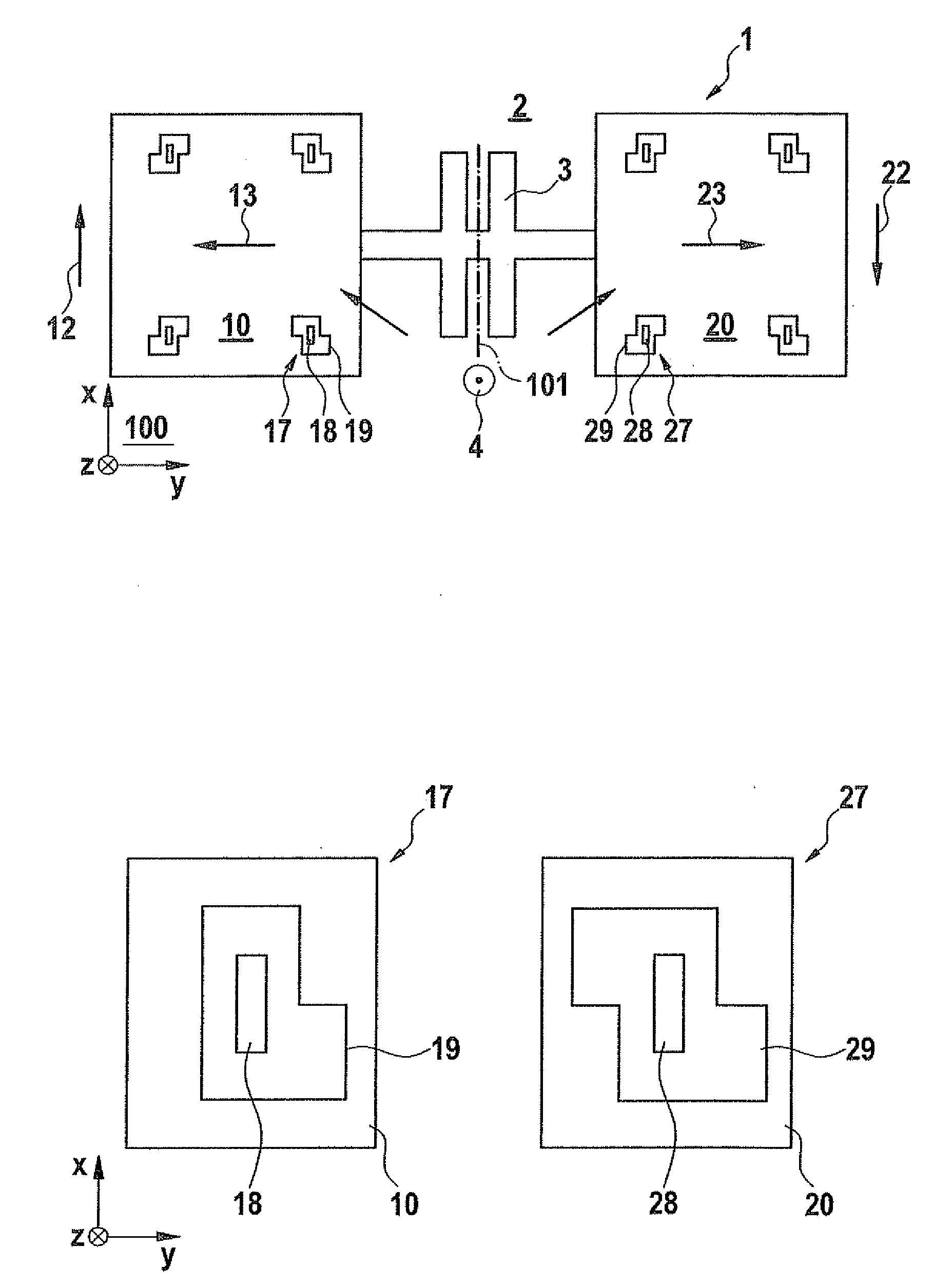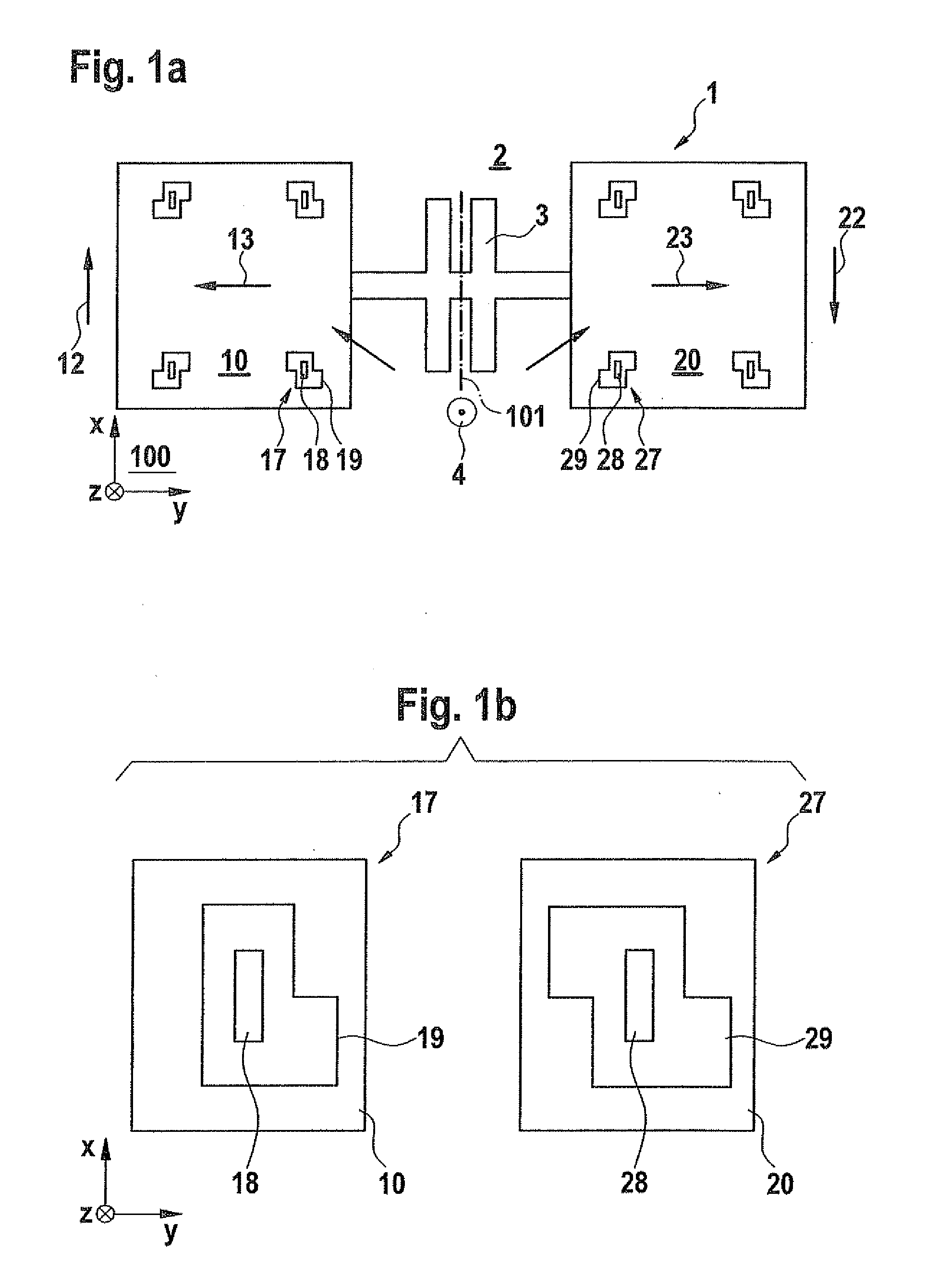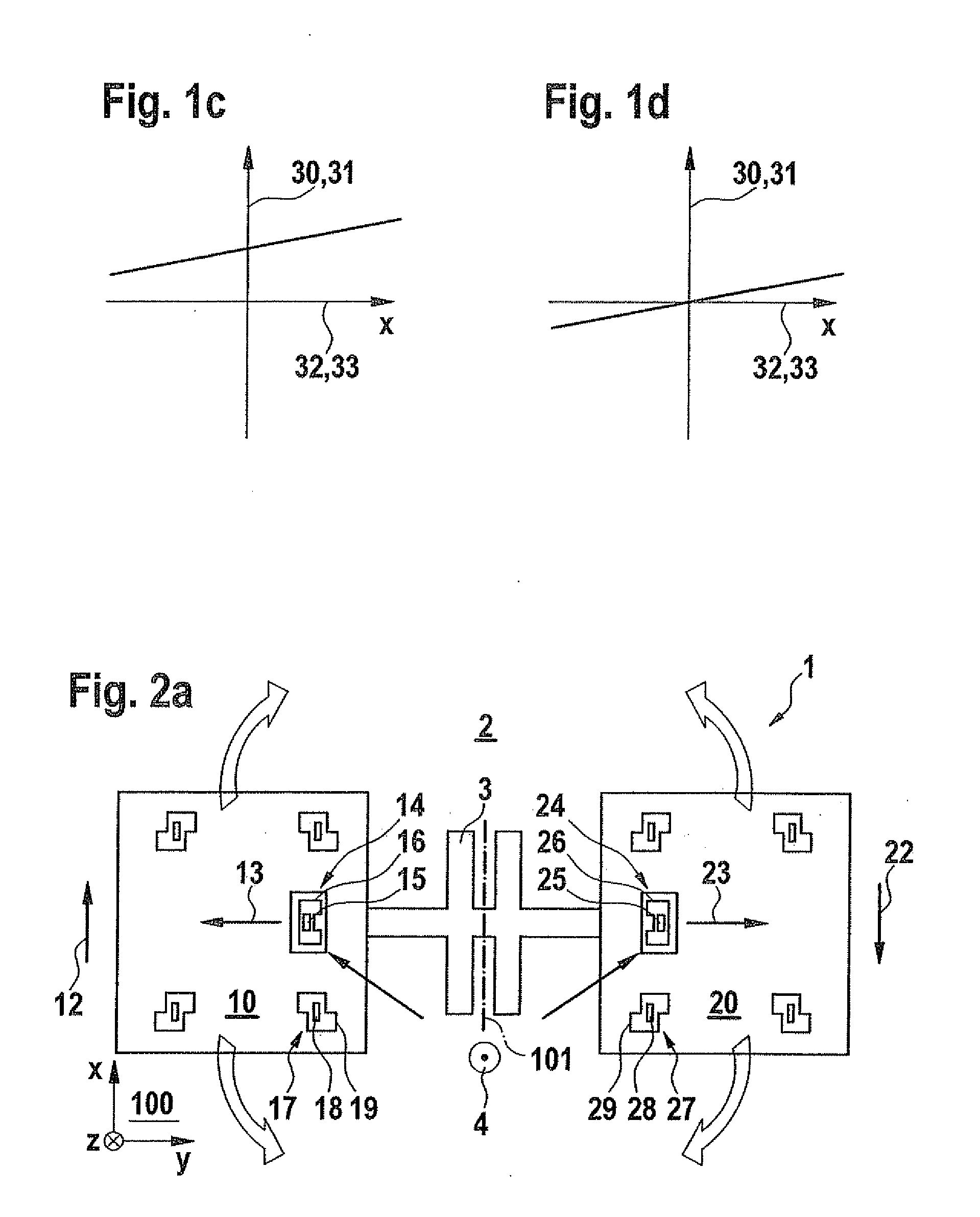Yaw rate sensor and method for operating a yaw rate sensor
a sensor and yaw rate technology, applied in the direction of acceleration measurement using interia force, turn-sensitive devices, instruments, etc., can solve the problems of disadvantageous change of quadrature, overload of detection branches, unwanted offset signals in detection branches, etc., and achieve the effect of sufficient high basic modulation amplitud
- Summary
- Abstract
- Description
- Claims
- Application Information
AI Technical Summary
Benefits of technology
Problems solved by technology
Method used
Image
Examples
Embodiment Construction
[0022]FIG. 1a shows a schematic top view of a yaw rate sensor 1 according to the related art, yaw rate sensor 1 including a Coriolis element 10 and a further Coriolis element 20, which are coupled to each other by an elastic element 4. Coriolis element 10 is excited to a driving oscillation 12 parallel to a first direction X by a driving arrangement (not illustrated), first direction X running parallel to a main plane of extension 100 of a substrate 2. Further Coriolis element 20 is driven to a further driving oscillation 22, which is antiparallel to driving oscillation 12, using a further driving arrangement (not illustrated). In the presence of a yaw rate 4 around a rotation axis parallel to a third direction Z, third direction Z being perpendicular to first direction X and perpendicular to main plane of extension 100, a Coriolis force acts upon Coriolis element 10 along second direction Y, which is perpendicular to first and third directions X, Y, so that Coriolis element 10 unde...
PUM
 Login to View More
Login to View More Abstract
Description
Claims
Application Information
 Login to View More
Login to View More - R&D
- Intellectual Property
- Life Sciences
- Materials
- Tech Scout
- Unparalleled Data Quality
- Higher Quality Content
- 60% Fewer Hallucinations
Browse by: Latest US Patents, China's latest patents, Technical Efficacy Thesaurus, Application Domain, Technology Topic, Popular Technical Reports.
© 2025 PatSnap. All rights reserved.Legal|Privacy policy|Modern Slavery Act Transparency Statement|Sitemap|About US| Contact US: help@patsnap.com



